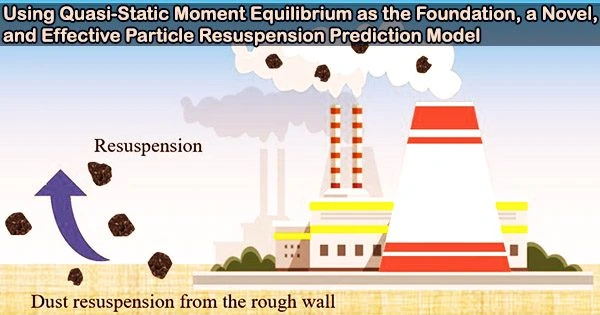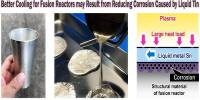A group of scientists investigated the way that airflow caused deposited particles to be resuspended. A particle resuspension model based on quasi-static moment equilibrium was developed using cutting-edge image detecting technologies and numerical simulation methods.
The model may be used to analyze the traceability of pollutants since it takes into account the influence of flow parameters, particle shape, and rough wall surface. This increases the accuracy of the forecast of the resuspension phenomena.
The team of Chinese researchers from Tsinghua University published their work in the journal Particuology.
The term “resuspension” describes the physical process by which particles that have been deposited on a surface are entrained away by a fluid flow. A significant cause of secondary environmental pollution is particle resuspension.
For example, dust particles carrying radioactive substances diffuse the atmosphere due to resuspension during nuclear reactor accidents; the dust deposited on the ground is inhaled by humans due to resuspension driven by vehicles.
The research team conducted numerous visualization experiments of particle resuspension using an atomic force microscope and high-speed camera to investigate the effects of airflow velocity, particle size, and wall roughness on the resuspension process in order to establish a more general and physical resuspension model.
As is well known, the main factors that control the resuspension of particles are the aerodynamic force and the adhesion force.
Through analyzing the motion of particles during the process of resuspension, we found that particles prefer rolling motion before detaching from the wall. Therefore, for micro-scale particles, the rupture of the equilibrium between the aerodynamic moment and adhesion moment on particles is the main reason for resuspension. For some rough walls with lower adhesion, it may produce a larger arm of force and then causes a larger adhesion moment to suppress particle resuspension.
Professor Peng Wei
Therefore, the resuspension fraction of particles increases as flow velocity and particle size increase. Contrary to popular belief, it may instead result in a remarkably low resuspension fraction for rough walls with little adherence.
Peng Wei, an associate professor from Tsinghua University, said, “Through analyzing the motion of particles during the process of resuspension, we found that particles prefer rolling motion before detaching from the wall.”
“Therefore, for micro-scale particles, the rupture of the equilibrium between the aerodynamic moment and adhesion moment on particles is the main reason for resuspension. For some rough walls with lower adhesion, it may produce a larger arm of force and then causes a larger adhesion moment to suppress particle resuspension.”
The construction of resuspension models is challenging because the near-wall flow and the rough wall fluctuate at random. The study team wants to create a statistical resuspension model for this.
Wherein the large eddy simulation method is used to calculate the flow fluctuation characteristic and an optical profiler is used to obtain and fit the rough wall morphological distribution.
A fresh and effective prediction model for particle resuspension is created using moment equilibrium and probability distribution. The model put out by the study team is more accurate than the traditional resuspension model as a result of the introduction of fluctuation features and rough wall morphology.
“In the next step, our research team will focus on the influence of accelerated flow under variable conditions and the multilayer particle deposition structure on resuspension,” said Peng.
In this way, the researchers might apply the present model to more fields.
















